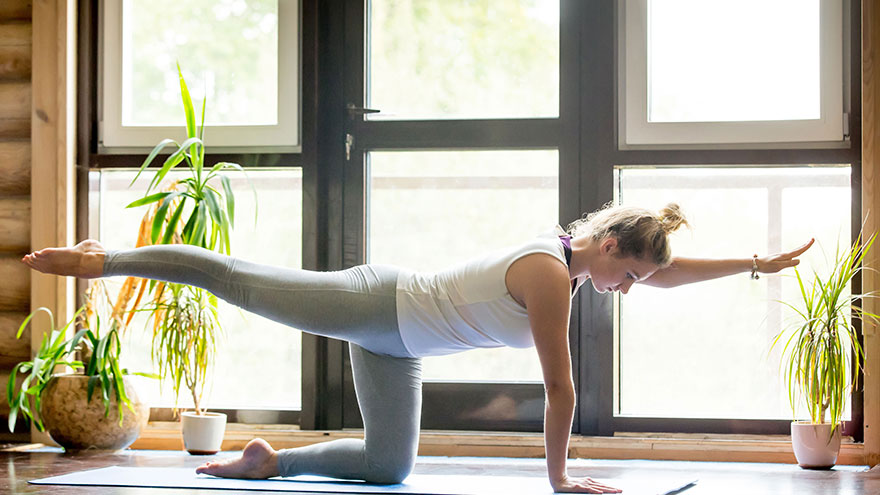How to Do Pilates at Home
Pilates exercises encompass an array of moves performed on and off a mat. Developed originally by German national Joseph Pilates and favored by dancers in the early 20th century, the first versions of Pilates were called contrology and involved core exercises performed on a mat. Over time, Pilates developed equipment, including the reformer and the cadillac, to enhance the exercises and make them adaptable to all levels. The original mat-based exercises, though, are effective at strengthening and stretching the muscles of the powerhouse — the hips, back and abdominals — and can easily be performed at home.

Building a Base
An array of DVDs and online resources provide demonstrations and workouts for you to follow at home, but nothing replaces the experience of working with a certified Pilates instructor. Even if you plan to work out at home, consider attending several classes at a studio or fitness center first to get the basics down.
Pilates instructors also offer private sessions, which can provide you even more detailed instruction and be an option if you’re intimidated by a classroom setting. Pilates mat exercises require precision and concentration to be effective; only a certified instructor can truly help you understand each exercise’s nuanced elements most effectively.
Warming Up Your Body
Pilates doesn’t involve a cardio warm-up like other exercise systems. Instead, the movements build upon each other to progress in challenge.
Classically designed Pilates classes begin with the Hundred, which warms the body and preps the breath. Lay on your back with your legs extended at a 45-degree angle, reach your arms alongside your hips, and lift your head, neck and shoulders up off the floor. Vigorously pump your arms up and down as if you were splashing a pool of water. Inhale through the nose for a count of five and exhale through pursed lips for a count of five, 10 times total, to complete 100 repetitions.
A home-based practice could then move through five to 10 roll-ups, in which you lie on the floor with knees bent and feet planted — or legs straight and zipped together — and slowly peel your spine up and down off the floor.
Spinal twists, rolling like a ball and leg circles are other moves that come early in a mat Pilates practice and are easy to perform at home; these effectively prepare the body for more complex exercises.
The Abdominal Series
The abdominal series is one of the hallmarks of the mat practice. Begin with the single-leg stretch. Lie on your back and pull your right knee into your chest, right hand at the outside of the knee, left hand at the ankle. Extend your left leg out above the floor, and raise your head and shoulders. As you inhale, gently use your abdominal muscles to pull the right knee closer; exhale and switch so the left knee is in toward your chest and the right leg is extended. Use your hands as guides only, not to initiate the movement.
You’ll move on to the double leg stretch, in which both knees are in toward the chest, the head and neck are lifted, and the hands are placed lightly outside the knees. Inhale and stretch the legs out at a 45-degree angle as you circle the arms up by your ears. Vigorously exhale as you pull them back in for five to 10 cycles. As you progress, you can add the straight-leg versions of these exercises.
The abdominal series ends with the criss-cross, which has you lying on your back, hands behind your head, neck and shoulders lifted, and right knee in while the left leg is extended just above the floor. You exhale and draw the left armpit to the right knee, then inhale to switch; complete about 10 repetitions for each side.
Pick and Choose
Mat Pilates includes more than 500 mat exercises, so what you choose to perform after the abdominal series really depends on your goals and skill level. You may move on to back exercises, such as swimming, or gluteal-focused exercises such as leg kicks. More core-based exercises include the teaser, the leg pull-up and scissoring.
Equipment for home-based Pilates can also enhance your practice. Reformers, which are machines that look like a bed frame with a gliding carriage and pulleys, provide variable resistance for Pilates exercises. Home models are less bulky than studio versions but still require a significant space and monetary investment. Less-expensive and obtrusive equipment include Pilates rings, balls and bands. These help you hone your form and add resistance to Pilates movements.
You Might Also Like :: The Best P90X Workouts for Women’s Thighs

